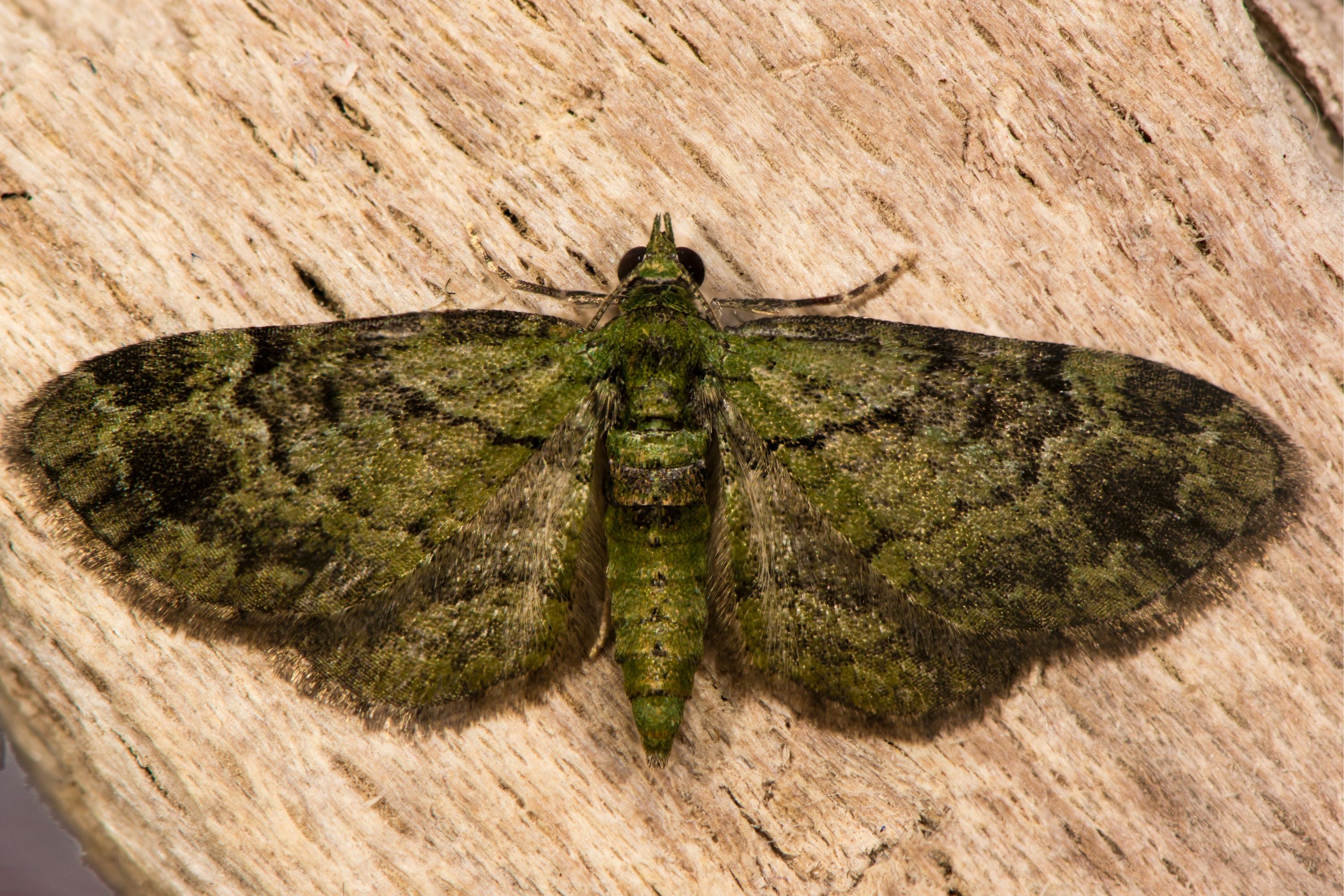Green pug
(Chloroclystis rectangulata)

Description
The green pug (Pasiphila rectangulata;synonym Chloroclystis rectangulata) is a moth of the family Geometridae. It is sometimes placed in the genus Chloroclystis or Rhinoprora. It is common throughout the Palearctic region (from Ireland to Japan) and the Near East, but also appears in North America. Typically this species has green wings with distinct dark bars but it can be quite variable and is often mostly dark brown with little green. The green coloration also fades over time. "Green, more or less dulled with black, the lines black, the postmedian forming sharper angles than in the two following (C. debiliata, C. agitata). Underside very sharply marked. - In ab. subaerata Hbn. the black markings are reduced, only the antemedian and the postmedian line developed. -In ab. cydoniata Bkh. the black is increased, particularly in the median area. - ab. cydoniata is entirely or almost entirely black." It flies at night in June and July and is attracted to light. The stout larva is green with a reddish stripe and feeds on the flowers of various Rosaceae including apple, blackthorn, cherry, hawthorn, pear and quince. The species overwinters as an egg. Chloroclystis is a genus of moths in the family Geometridae first described by Jacob Hübner in 1825. Palpi with second joint thickly scaled and reaching beyond the sharp frontal tuft, third joint prominent. Antennae of male annulated. Hind tibia with two spur pairs. Abdomen with slight dorsal crests. Forewings with vein 3 from angle of cell. Vein 5 from middle of discocellulars and vein 6 from upper angle. Veins 10 and 11 stalked, and vein 10 anastomosing (fusing) with veins 7, 8 and 9 to form the large areole. Vein 11 becoming coincident with vein 12. Hindwings with vein 5 from middle of discocellulars. Vein 6 and 7 stalked, and vein 8 anastomosing with vein 7 to beyond middle of cell.
Taxonomic tree:







